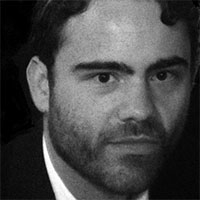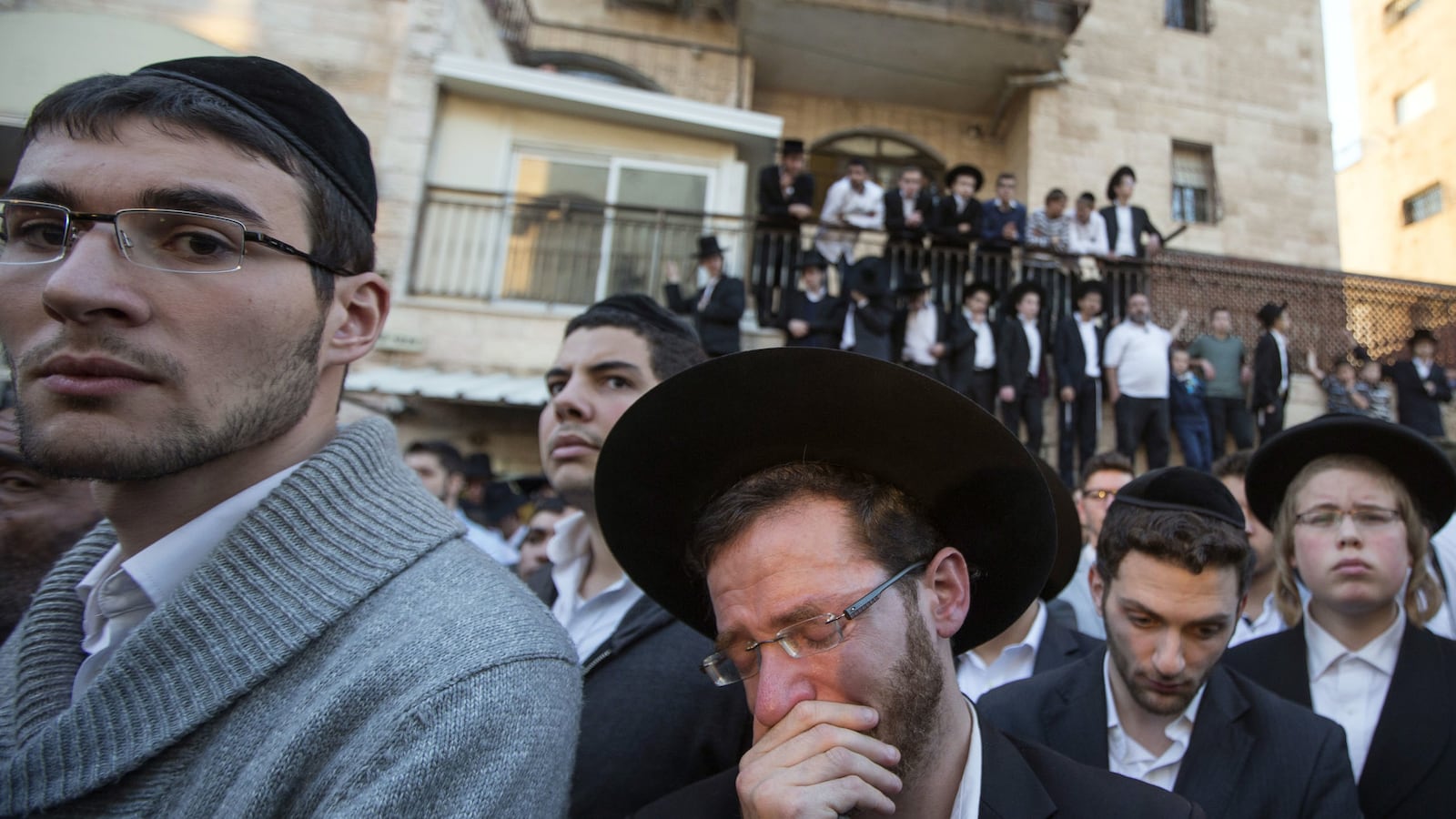BETHLEHEM—In a shared taxi driving through Bethlehem on Tuesday morning, news broke over Arabic radio: The two suspects in an attack on a synagogue in West Jerusalem that left four rabbis and a police officer dead were from the Popular Front for the Liberation of Palestine (PFLP).
“That’s just like them,” said Mustafa al-Araj, an activist from the Aida refugee camp, referring to the long-dormant leftist militant group. “We don’t hear from them for years, and then when they come back, they do it with a bang.”
Certainly the cousins who carried out the synagogue massacre were PFLP members, and Palestinians in Gaza, especially, celebrated the news, but the organization as such has not gone so far as to claim responsibility. And the question of who orders attacks, and who carries them out, has become a crucial new challenge for any effort to restore order.
The PFLP, founded almost 50 years ago by the secular Marxist George Habash, from a Christian family, is the Palestinian group that made plane hijacking famous in the 1970s. The image of Leila Khaled, the beautiful militant responsible for two of these hijackings, is almost as present in graffiti in the occupied West Bank as the grizzled visage of the late Palestinian leader Yasser Arafat.
The group remained active throughout the First and Second Intifadas, or Palestinian uprisings, culminating in the Oct. 17, 2001, assassination of far-right Israeli minister Rehavam Ze’evi, who advocated the “transfer” of 3.3 million Palestinians to neighboring Arab nations.
That hit, the first and only Palestinian assassination of an Israeli cabinet minister in the decades-old conflict, was carried out in response to Israel’s assassination of Abu Ali Mustafa, the PFLP’s leader, in August 2001.
By 2005, the end of the Second Intifada, the group had been routed by Israel, and political divisions with Fatah, the Palestinian Authority’s ruling party, had left its members largely isolated from mainstream political discourse.
Their return to action harkened back to the days of organized militancy in the West Bank. But al-Araj isn’t convinced that whatever is happening, whether it be an Intifada or not, will be like the last two.
“We haven’t seen anything like this before,” he told The Daily Beast, looking out past the enormous wall Israel constructed that separates Jesus’s place of birth, Bethlehem, from his place of execution, Jerusalem.
Al-Araj, collecting his thoughts, said that most of the recent violence was the work of individual Palestinians. “There is no political leadership, the orders to attack are coming from the people themselves. In Jerusalem, in the north, Arabs with Israeli IDs are proving they’re Palestinian, and that they’re hurting.”
There are many grievances, certainly, among all sectors of the Palestinian population. Since June, Israel has conducted two large-scale military operations in the West Bank and Gaza.
June’s Operation Brother’s Keeper was the IDF’s attempt to rescue three Jewish settler teens living in the West Bank who had been kidnapped and killed by people affiliated with Hamas, although Hamas’s leader Khaled Meshaal denies planning or ordering the abductions. The Israeli operation later came to be seen as a massive crackdown on Hamas, resulting in reprisal attacks from both Palestinians and then Israelis, and killings across the area that continue to this day.
Operation Protective Edge, Israel’s latest offensive in the Gaza Strip, followed shortly thereafter in July. It left more than 1,400 Gazan civilians dead in 50 days of fighting, while Israeli civilian casualties stand at four, according to the UN Office for the Coordination of Humanitarian Affairs (PDF).
“After Gaza, we thought we would have some peace,” said a local history teacher working for the Bethlehem municipality, who asked his name not be published. This hasn’t been the case. “Today,” he said, “my mother called me on her way home from work in Jerusalem. She was speaking Hebrew because she was so scared.”
The Holy City, specifically the al-Aqsa compound, has been the flashpoint for the latest round of conflict. Tensions have made the longer journey to the calm, northern Galilee region in Israel an ordeal, and the shorter journey to tourist-friendly Bethlehem almost as difficult.
By early evening on Tuesday, the inter-city transportation system of shared taxis was shut down. Buses to the presumptive capital of a future Palestinian state, East Jerusalem, were immobile due to a general strike called after a Palestinian bus driver was found hanged inside of his bus, in what may have been a suicide or a lynching. Prime Minister Benjamin Netanyahu has called any suggestion the Palestinian did not hang himself a “wild blood libel” against Israeli Jews.
When I tried to get to the embattled city on Tuesday evening, I faced repeated warnings not to try it.
“You would have to ask the taxi driver to take you to the checkpoint, then you would walk through. Then what? You’re in the middle of riots,” a Palestinian living next to the taxi station told me.
The closure of transport was a perfect example of the far-reaching consequences of clashes in the disputed capital.
For the Palestinians who aren’t demonstrating against Israeli forces in the street, the world stops when violence breaks out. The already severe restrictions on freedom of movement created by Israeli checkpoints and the towering separation barrier that winds along the edge of the West Bank are made worse by Israeli military operations.
On Monday night, before the synagogue attack, the Palestinian village al-Ram already was closed to transport going to Ramallah from Bethlehem because of riots. This meant that Palestinian taxi drivers had to drive through the Israeli settlement of Bet El.
Driving this way means extra money paid to the driver (5 Israeli Shekels, roughly $1.30), and another 30 to 45 minutes added to the already hour-long trip. Bethlehem and Ramallah are 19 miles apart. It’s the settlements, wall, and checkpoints that drag it out.
By Tuesday night, going through Bet El was no longer possible.
The attack on the synagogue was deplorable, but according to Israeli journalist Amira Hass, a passionate critic of Israel’s occupation, it shouldn’t be misconstrued as a religious war. The roots of the violence can be found in the nearly six decades since Israel conquered Gaza and the West Bank.
She writes in the Israeli Daily Haaretz that “a synagogue during morning prayers is a convenient target—not because it’s a house of prayer, but because it’s full of people who are undoubtedly members of the occupying nation.”
Over the past decade, Palestinians have seen armed and nonviolent resistance fail to achieve real change, a wall constructed around their homes, caging them in, and huge amounts of their land annexed for Jewish-only settlements. All while the international community observed, if not passively, impotently.
As we walked through the Aida refugee camp, established in 1950, another Palestinian asked al-Araj what the problem in Jerusalem was.
“The same as always,” he replied.




